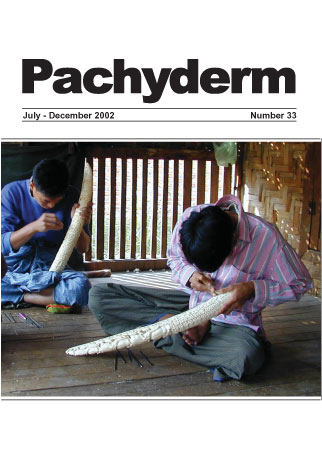Decline of elephants and other wildlife in the Nasolot-South Turkana and Kerio Valley-Kamnarok conservation areas, Kenya
Abstract
The total aerial count of elephants (total counts for elephant and other wildlife, estimation for livestock numbers) in Nasolot, South Turkana, Kerio Valley and Kamnarok NRs undertaken 4-8 August, 2002 was flown over areas containing the largest elephant populations in western Kenya. The 490 elephant counted were largely present the northern portion of their range. This count showed significant loss in numbers in recent years: a decline of 362 individuals or 42.4% since 1997 and 302 or 38.1% decline since 1999. The distribution pattern during all three of these counts has been similar, most elephant were observed in the northern and southern parts of the ecosystem. 62 skeletons (carcasses) were observed in 2002 compared to 45 in 1999 and 13 in 1997. The carcass ratio of 11.2% was much higher than that in other elephant ranges in Kenya, and if it is considered to be a relative index of poaching levels, the illustrates an alarming situation. The estimated 29,000 head of livestock signify a high level of human activity and thus there is a high potential for human-wildlife conflict in this area.
Downloads
Published
How to Cite
Issue
Section
License
Copyright (c) 2002 Patrick O. M. Omondi, Elphas K. Bitok, Rose Mayienda

This work is licensed under a Creative Commons Attribution-NonCommercial 4.0 International License.




